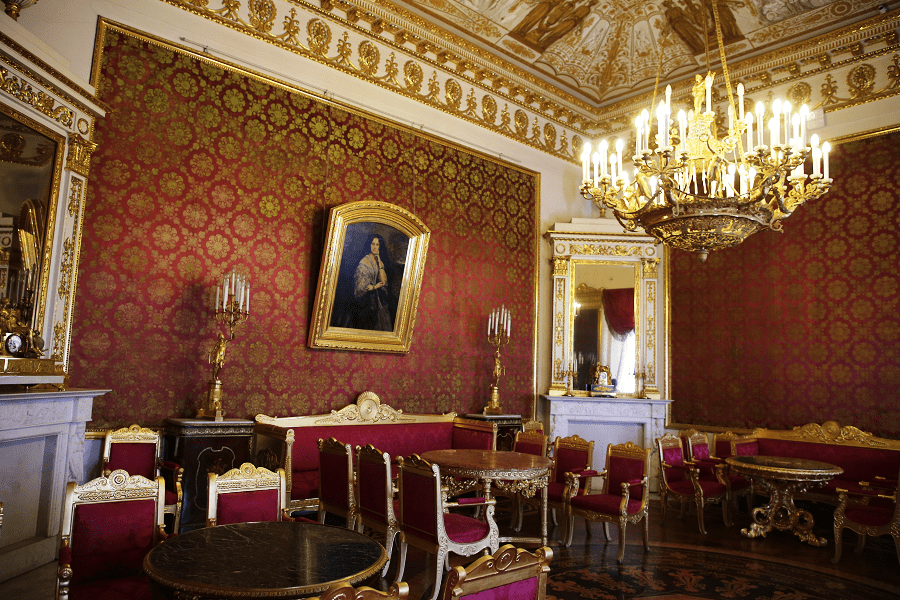The Yusupov Palace on the Moyka is a former palace in St. Petersburg (Admiralteysky District), a monument of history and culture of federal significance. Located on the embankment of the Moyka River, the territory of the palace with a garden extends to Dekabristov Street.
The palace went down in history as the site of the murder of Grigory Rasputin.
Currently, the building houses the Palace of Culture of Educational Workers, which in the 1990s was formed into a multifunctional historical and cultural center that combines educational, excursion, exhibition and concert activities.
In the 1770s, the construction of a modern palace building began, designed by Jean-Baptiste Vallin-Delamote for Count Andrei Petrovich Shuvalov.
The appearance of the palace was significantly different from the modern one: the side projections had only two floors, from the side of the Moyka there was an entrance arch leading to the courtyard; the main entrance to the palace was from the courtyard. The triumphal gates have been preserved unchanged since those times – an arch (from the side of Decembrists Street) and a seven-meter-high fence with a classical colonnade.
In 1830, the palace was purchased by Boris Nikolayevich Yusupov for 250 thousand rubles. From then until 1917, five generations of the Yusupov princes owned the palace. The palace became known as the “Yusupov Palace”, although it was only one of 57 palaces in Russia that belonged to them.
A significant restructuring was carried out from 1830 to 1838 (architect A. A. Mikhailov 2nd):
Lateral risalits became three-storied.
A new building with a White Column (Banquet) Hall was erected on the east side.
The outbuildings were connected, and art galleries and a home theater in the Baroque style were arranged in them.
New greenhouses and a garden pavilion were built.
The garden was laid out.
The main staircase from the side of the Moika was arranged.
The Dance Hall, Green, Imperial and Blue drawing rooms were created.
Italian masters worked on the interiors, including A. Vigi and B. Medici.
In 1832-1834, the architect Mikhailov also expanded the palace with an extension along the eastern side of another building that housed five halls and a theater.
In 1881, the architect A. D. Schilling built the Intercession Church at the palace (not preserved).
In 1890-1916, an extensive internal restoration of the palace was carried out under the guidance of the architect A. A. Stepanov. In the early 1890s, electricity, sewerage and water supply, central heating (water) were installed in the palace, the theater was rebuilt and the Mauritanian drawing room was created. In 1914, the Great Living Room, Great Hall, Dining Room were created.
The palace is open to the public; for sightseeing purposes, the main halls, the theater, living rooms and historical rooms are open.
Concerts of classical music, performances, vocal evenings are regularly held.
A variety of cultural programs and receptions are organized.
In the basement where Rasputin’s murder took place, an exhibition “Grigory Rasputin: Pages of Life and Death” with wax figures is open.
Working hours: daily, 10:00–19:30.
Address: entrance from st. Dekabristov, 21, St. Petersburg. Metro: Admiralteyskaya, Sadovaya, Spasskaya.
Payment by card, Wi-Fi, tickets 250–700 ₽. Wheelchair Accessibility: Not available.
*Not to confuse with Yusupov palace and garden on Fontanka.































